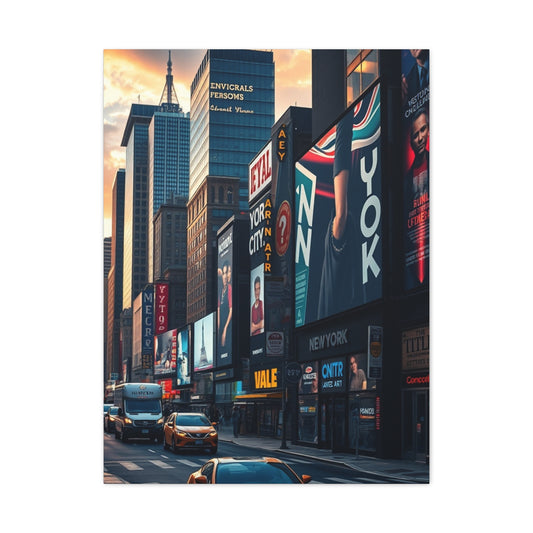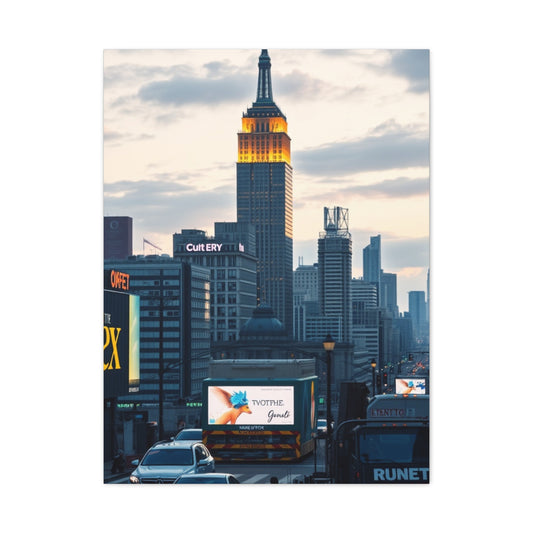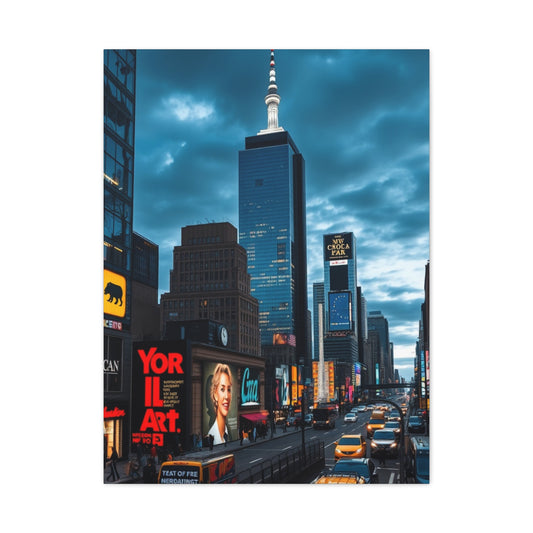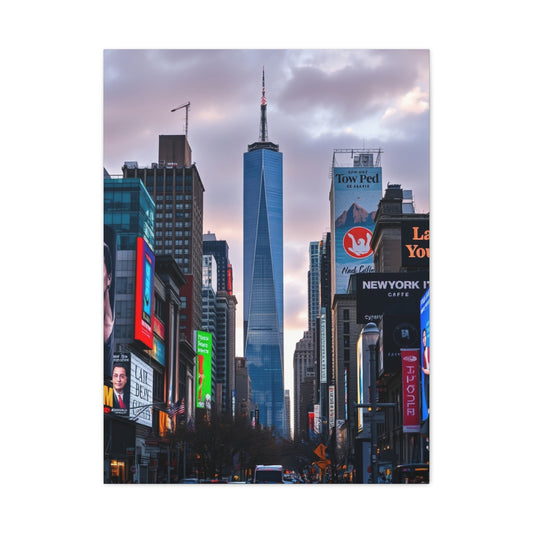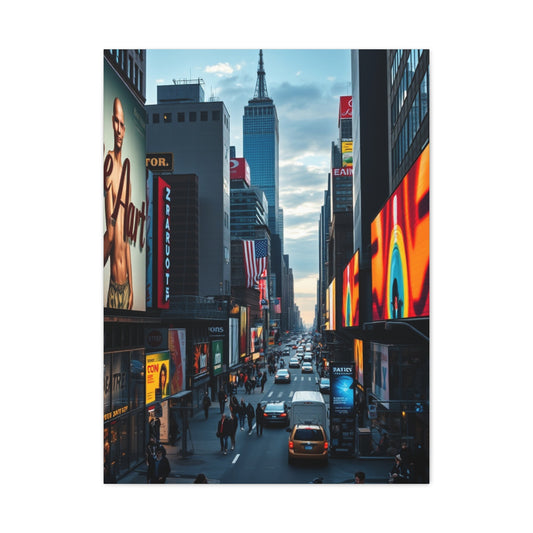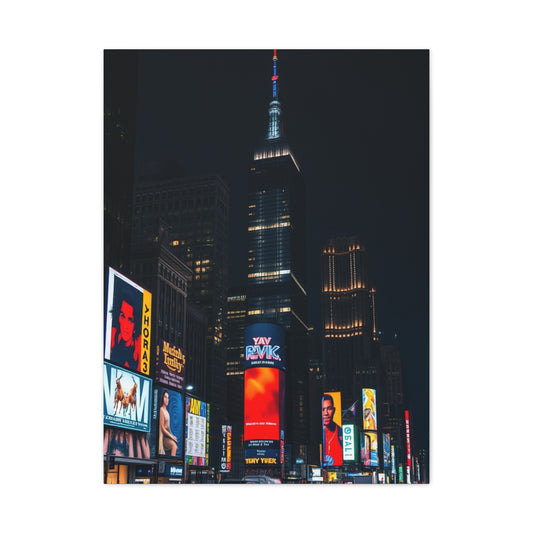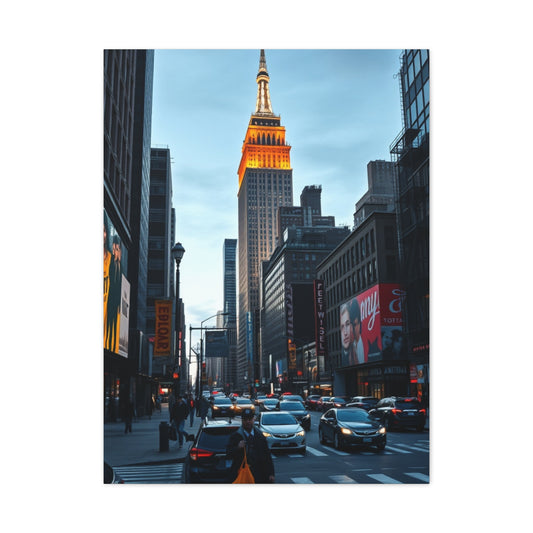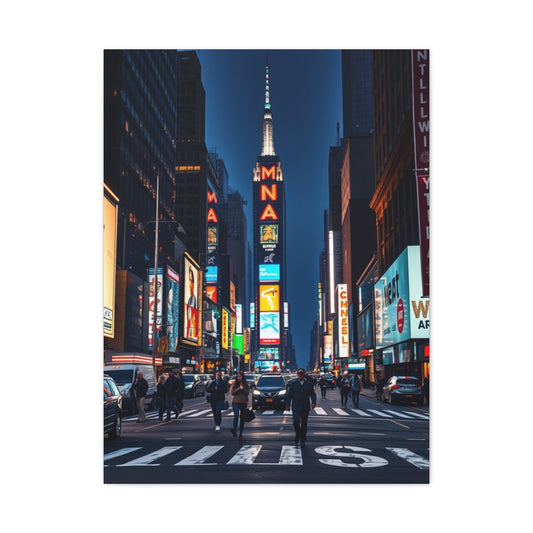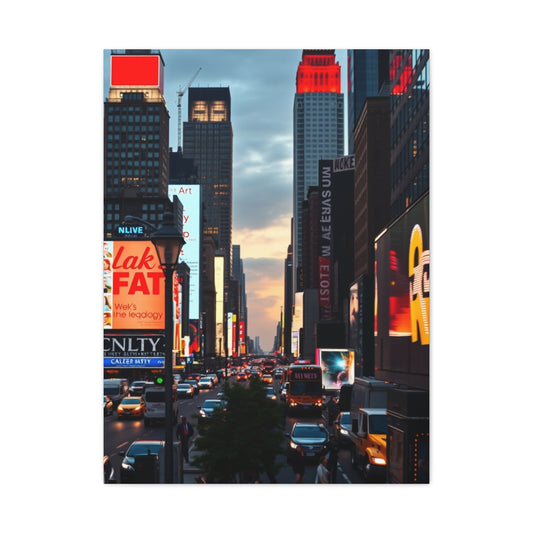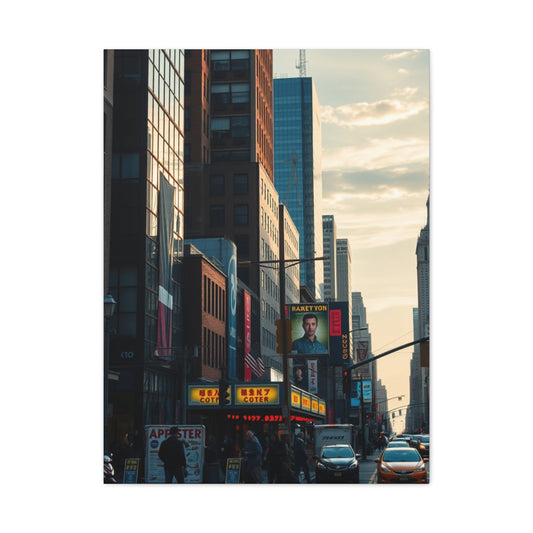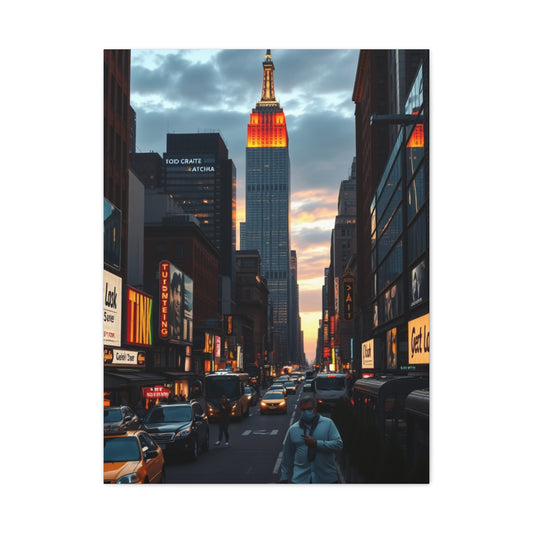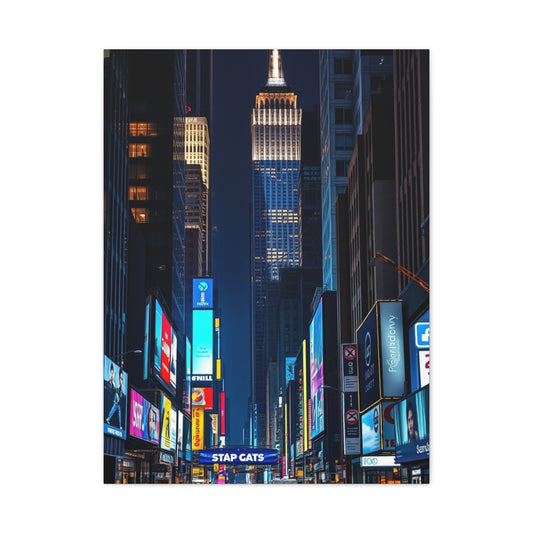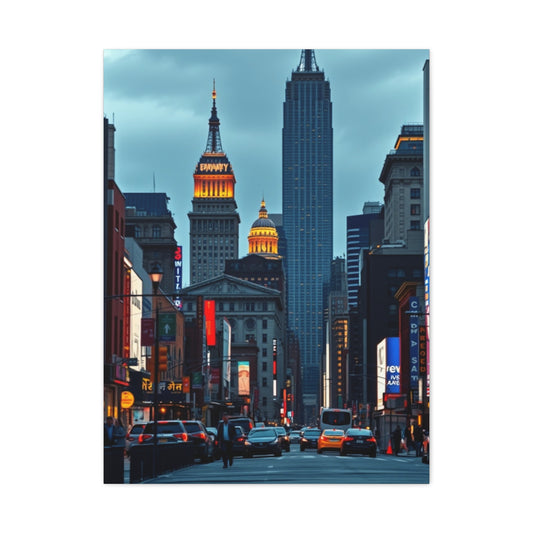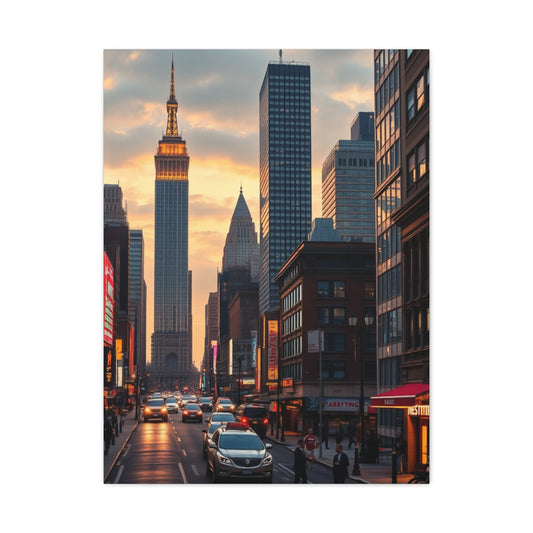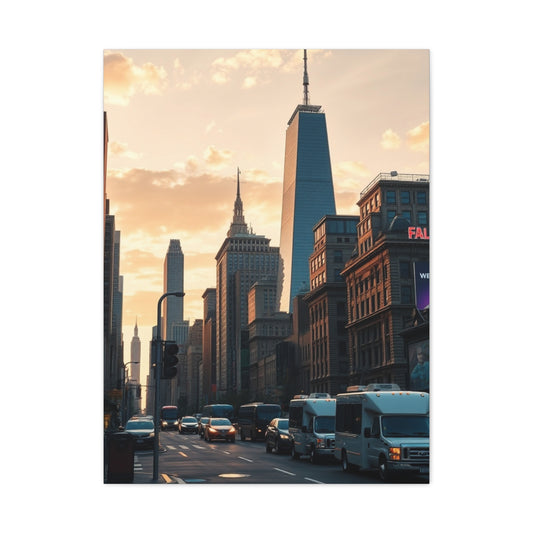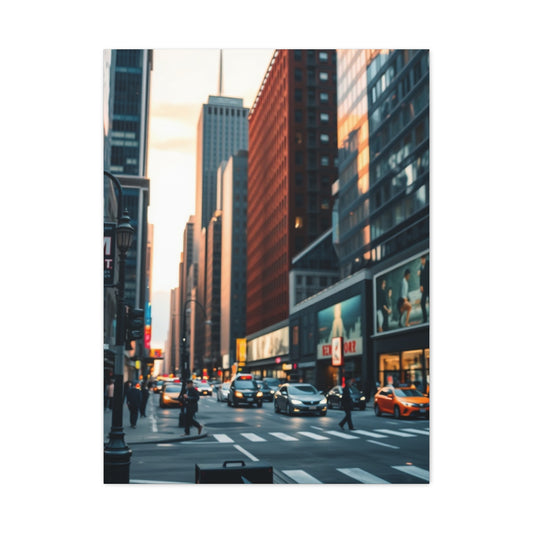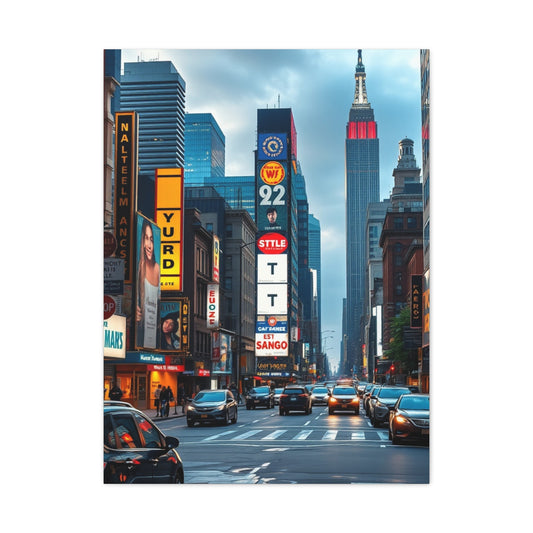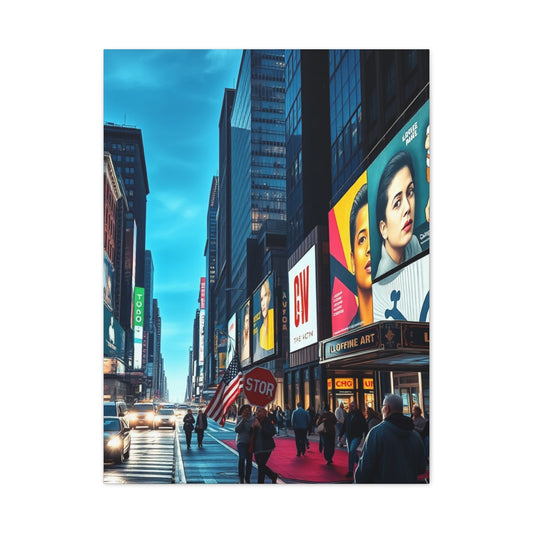Urban Wall Art: Breathing Life into City Spaces
Urban wall art is a captivating reflection of the energy and diversity of city life. It transforms blank, uninspiring walls into dynamic canvases that tell stories, celebrate culture, and foster community identity. Unlike conventional art forms confined to galleries, urban wall art exists in the public realm, accessible to all and infused with the pulse of the city. Its influence extends beyond mere decoration, shaping perceptions of space and offering viewers an intimate glimpse into the creativity and resilience of urban communities. For individuals passionate about home and interior design, understanding the vibrancy and cultural significance of urban wall art inspires them to create spaces that are not only visually appealing but also meaningful.
The Origins and Historical Significance of Wall Murals
Murals have a rich history that traces back to ancient civilizations. From the frescoes of ancient Egypt to the grand murals of Renaissance Europe, walls have long served as a medium for storytelling, religious expression, and social commentary. In early societies, murals depicted religious ceremonies, mythological narratives, and daily life, providing a window into the cultural priorities and artistic skills of the time. These early artistic expressions established the foundation for the contemporary urban mural movement, highlighting the enduring human desire to communicate visually in shared spaces. Over centuries, murals evolved to incorporate a wider range of themes and techniques, transitioning from religious and historical depictions to social, political, and cultural narratives, which set the stage for the modern urban wall art movement.
Evolution of Urban Wall Art in Contemporary Cities
Modern urban wall art is a direct descendant of historical mural traditions, but it has evolved to embrace the spontaneity and vibrancy of city life. In the late twentieth century, graffiti and street art emerged as forms of resistance and self-expression, transforming public spaces into arenas of creativity and dialogue. Cities like New York, Berlin, and São Paulo became incubators for these movements, where artists used walls as both canvases and platforms for commentary on social issues, identity, and community dynamics. Unlike traditional murals, which were often commissioned, urban wall art thrives in the intersection of legality and rebellion, inviting viewers to explore messages that challenge societal norms or celebrate local culture. Over time, these urban artworks have gained recognition and legitimacy, inspiring cities worldwide to embrace street art as an integral component of urban identity and aesthetic enhancement.
Styles and Techniques in Urban Wall Art
Urban wall art encompasses a wide array of styles and techniques, each contributing to the rich tapestry of cityscapes. Graffiti remains one of the most recognizable forms, characterized by bold colors, intricate lettering, and expressive motifs. It often serves as a form of personal or political expression, giving voice to marginalized communities or emerging artists. Stencil art offers a contrasting approach, allowing for precision and replicability, often featuring striking imagery or social commentary. Murals can range from abstract compositions to detailed, lifelike depictions, transforming entire buildings into immersive visual experiences. Additionally, mixed-media installations and three-dimensional interventions are increasingly being incorporated into urban spaces, pushing the boundaries of traditional mural art. For those seeking to integrate urban wall art into home decor, reproductions of these techniques in framed prints, canvases, or murals provide the opportunity to bring the energy and creativity of city streets into personal living spaces.
Cultural and Social Impact of Urban Wall Art
The significance of urban wall art extends far beyond aesthetic appeal. It plays a vital role in shaping cultural identity, fostering community pride, and initiating dialogue on social and political issues. In many cities, murals and street art provide marginalized communities with a platform to express their experiences, beliefs, and aspirations. These artworks often highlight local history, celebrate cultural diversity, and create a sense of belonging among residents. The visual vibrancy of urban wall art can revitalize neglected neighborhoods, transforming underutilized spaces into points of engagement and inspiration. Moreover, public interaction with urban art can promote social cohesion, encourage civic engagement, and enhance the overall perception of urban environments. This interplay of artistry and community underscores the profound importance of urban wall art as a medium for both personal and collective expression.
Incorporating Urban Wall Art into Home and Interior Spaces
For decor enthusiasts, the appeal of urban wall art extends beyond city streets and into home interiors. Urban-inspired artworks can infuse living spaces with energy, character, and personality, providing a dynamic focal point that complements contemporary, industrial, or eclectic decor styles. Graffiti-inspired prints, murals, and mixed-media pieces can be adapted to suit various room sizes, color schemes, and thematic preferences. Curating a gallery wall featuring reproductions of urban art allows for creative expression while maintaining cohesion and balance within a space. By incorporating elements of urban wall art, homeowners can bring a sense of cultural depth, storytelling, and visual intrigue into their interiors, bridging the gap between city vibrancy and personal living environments.
Urban Wall Art and Community Identity
Urban wall art extends far beyond decorative appeal; it is deeply intertwined with the cultural and social fabric of communities. These murals and street art pieces act as visual storytelling tools, reflecting the collective memory, values, and identity of neighborhoods. Communities often embrace these artworks as symbols of pride and cohesion, with murals highlighting local history, social movements, or iconic figures. Public spaces transformed by urban art create shared experiences where residents, visitors, and artists intersect, fostering dialogue and engagement. In many cities, local governments and community organizations recognize the power of wall art as a means to enhance civic identity, encourage cultural participation, and even reduce urban blight. The visibility of murals and graffiti contributes to a sense of ownership and belonging, helping communities reclaim and redefine spaces that might otherwise remain neglected. By documenting cultural narratives and highlighting everyday life, urban wall art strengthens the bond between residents and their environment, making neighborhoods more vibrant and memorable.
Social and Political Commentary Through Urban Art
A defining feature of urban wall art is its ability to convey messages beyond aesthetics. Artists often use public walls as platforms to address social and political issues, creating works that challenge conventions, raise awareness, or celebrate underrepresented communities. Murals can critique societal norms, advocate for equality, or commemorate historical events, transforming urban landscapes into living commentaries on the human experience. For example, street art in cities like Berlin frequently addresses themes of freedom, migration, and social change, while graffiti in New York emerged as a voice for marginalized youth expressing frustration and aspiration. The accessibility of urban wall art ensures that these messages reach diverse audiences, sparking conversations among people who might never visit a traditional gallery or museum. By integrating meaningful content into public spaces, urban wall art contributes to social consciousness and community engagement, reinforcing the idea that art is not only for observation but also for reflection and action.
Urban Art as a Catalyst for Neighborhood Revitalization
Urban wall art has proven to be a transformative force in neighborhood revitalization. Cities around the world have embraced murals and street art as a tool to rejuvenate neglected areas, attract tourism, and stimulate economic activity. When walls, alleys, or building facades are turned into canvases, the visual vibrancy signals investment and care, making neighborhoods feel safer and more welcoming. Public art initiatives often accompany local development projects, fostering collaboration between artists, residents, and municipal authorities. In addition to aesthetic improvements, urban wall art can encourage local businesses to invest in the area, drawing visitors and supporting cultural tourism. The Wynwood Walls in Miami, for instance, demonstrate how a concentrated effort in urban art can transform industrial districts into globally recognized artistic destinations. By blending creativity with urban planning, cities harness the power of visual storytelling to revitalize communities and reinforce the value of art as a civic resource.
Notable Cities and Their Contributions to Urban Wall Art
Certain cities have become internationally renowned for their commitment to urban wall art, each contributing unique styles, narratives, and cultural perspectives. In New York, graffiti culture shaped the city’s identity in the 1970s and 1980s, with subway trains and building walls serving as canvases for artists like Keith Haring and Jean-Michel Basquiat. Berlin offers a contrasting approach, where the remnants of the Berlin Wall serve as a living gallery, blending historical reflection with contemporary expression. Melbourne’s laneways are celebrated for their constantly evolving street art, where alleyways transform into immersive, colorful corridors that attract locals and tourists alike. São Paulo’s graffiti culture combines political messages with bold artistic experimentation, reflecting both the city’s challenges and its creative energy. In cities like Lisbon and Valparaíso, murals and street art redefine public spaces, transforming historical districts and neglected streets into dynamic artistic experiences. These cities exemplify how urban wall art can become a defining element of a city’s identity, influencing both local culture and global perception.
The Intersection of Tourism and Urban Art
Urban wall art has become a significant driver of tourism, attracting visitors eager to experience cityscapes infused with creativity. Art-focused neighborhoods and districts often become cultural destinations, with guided tours, photography opportunities, and art festivals showcasing the work of local and international artists. This intersection of tourism and urban art benefits both the cultural sector and the local economy. Visitors engage with the city on a visual and emotional level, gaining insight into local narratives, traditions, and social dynamics. Urban art festivals, such as the Street Art Biennale in Berlin or the Upfest Festival in Bristol, exemplify how temporary and permanent artworks can cultivate cultural tourism and global recognition. For residents, the influx of visitors also encourages pride in local artistic contributions, reinforcing community identity and fostering appreciation for creative expression. By connecting art, tourism, and cultural engagement, urban wall art transcends its role as decoration to become a vital aspect of city life.
Preservation and Challenges of Urban Wall Art
While urban wall art enriches communities and cityscapes, it faces challenges related to preservation, legality, and public perception. Graffiti, for example, is often controversial due to associations with vandalism, leading some cities to remove unsanctioned works even when they hold cultural significance. Weather, pollution, and urban development can also threaten the longevity of murals and outdoor installations, necessitating efforts to protect and maintain these artistic expressions. Preservation initiatives may involve collaboration between municipal authorities, artists, and cultural organizations to ensure that important works endure while new creations continue to emerge. Some cities have implemented policies that provide designated spaces for street art, striking a balance between creativity and regulation. Education and advocacy play a key role in changing perceptions, helping communities recognize urban wall art as a legitimate and valuable cultural asset rather than a transient nuisance.
Integrating Urban Wall Art into Community Programs
Many municipalities and nonprofit organizations integrate urban wall art into community programs to foster youth engagement, education, and social development. Art workshops, mentorship programs, and participatory mural projects provide opportunities for residents, particularly young people, to develop artistic skills while contributing to their neighborhoods. Such initiatives encourage creativity, teamwork, and civic pride, transforming art into a tool for empowerment and social cohesion. Additionally, these programs can address social challenges by providing alternative forms of expression for at-risk populations, promoting inclusion and dialogue. By embedding urban wall art within broader community initiatives, cities leverage creativity as a force for positive social change, ensuring that public spaces reflect both artistic excellence and the collective spirit of the residents who inhabit them.
Urban Wall Art in the Digital Era
The influence of urban wall art has expanded further in the digital era, with social media, virtual galleries, and online mapping platforms enabling global audiences to engage with street art. Artists now share their work digitally, reaching audiences far beyond the physical boundaries of their city. Platforms dedicated to documenting murals and graffiti allow enthusiasts to explore urban art virtually, discover new artists, and learn about the cultural context behind each piece. Digital engagement also fosters collaboration and networking among artists, encouraging innovation and cross-cultural inspiration. The online visibility of urban wall art reinforces its significance as a contemporary cultural phenomenon, allowing public creativity to intersect with technology while influencing trends in home decor, fashion, and visual culture.
Global Urban Wall Art Trends
Urban wall art has evolved into a global phenomenon, influencing cities, neighborhoods, and creative communities worldwide. Each region contributes a unique perspective, shaped by its culture, history, and social dynamics. In Latin America, cities such as Valparaíso and Bogotá have embraced murals as a means of storytelling, often depicting local legends, political movements, and social justice themes. In Europe, Berlin, Lisbon, and London are recognized for innovative street art festivals and open-air galleries that merge historical architecture with contemporary expression. Asian cities like Tokyo and Mumbai showcase a fusion of traditional motifs and modern graffiti, reflecting the rapid urbanization and creative experimentation characteristic of these regions. Across Africa, street art is increasingly used to celebrate heritage, inspire youth, and address social issues. Global trends indicate a move toward immersive experiences, interactive installations, and mixed-media approaches that combine painting, sculpture, digital projection, and augmented reality to engage audiences in new ways.
Techniques and Media in Urban Wall Art
Urban wall art encompasses a wide array of techniques and media, each contributing to the richness and diversity of cityscapes. Traditional mural painting remains foundational, with artists using brushes, rollers, and spray paints to create large-scale visual narratives. Graffiti is distinguished by its distinctive lettering, bold colors, and often rebellious undertones. Stencil art enables precision and reproducibility, allowing intricate designs to be applied quickly in public spaces. Wheatpaste posters, stickers, and mixed-media collages expand the possibilities for expression, often combining photography, digital printing, and hand-drawn elements. Three-dimensional and sculptural interventions are also gaining popularity, transforming walls into interactive, tactile experiences. Emerging technologies, including projection mapping and augmented reality, allow artists to animate urban walls, creating dynamic installations that respond to environmental or audience interaction. Understanding these techniques enhances appreciation for urban wall art and inspires individuals seeking to integrate similar styles into personal or commercial projects.
Inspirations Behind Urban Wall Art
Urban wall art draws inspiration from a variety of sources, reflecting the multifaceted nature of contemporary cities. Cultural heritage and local traditions are frequently celebrated, with artists portraying iconic figures, folklore, and historical events. Social and political issues inspire murals that critique injustice, promote equality, or commemorate activism. Environmental themes are increasingly prevalent, with urban art serving as a platform for sustainability messaging and awareness campaigns. Personal expression and identity also play significant roles, as artists infuse their work with emotion, perspective, and creativity. Additionally, urban art often responds to the physical environment itself, transforming architectural features, alleyways, and overlooked spaces into meaningful canvases. This rich tapestry of inspiration ensures that urban wall art remains dynamic, relevant, and resonant with diverse audiences, providing endless opportunities for engagement and interpretation.
Integrating Urban Wall Art into Residential Spaces
Incorporating urban wall art into residential interiors has become a popular trend among decor enthusiasts seeking to blend personal style with contemporary creativity. Large-scale murals can serve as statement walls in living rooms, bedrooms, or dining areas, transforming ordinary surfaces into immersive visual experiences. Smaller prints, canvases, and framed reproductions allow for flexibility, enabling homeowners to curate gallery walls that reflect personal taste and complement existing decor. Graffiti-inspired artwork can add bold energy and color, while stencil or mixed-media pieces introduce subtle sophistication and texture. Urban wall art also encourages the layering of different materials, colors, and visual motifs, allowing for experimentation and customization. By integrating these elements thoughtfully, residents can create spaces that feel modern, expressive, and connected to the broader cultural vibrancy of urban environments.
Commercial Applications of Urban Wall Art
Beyond residential use, urban wall art has significant applications in commercial spaces, contributing to branding, ambiance, and customer experience. Restaurants, cafes, offices, and retail stores increasingly incorporate murals, graffiti-inspired designs, or interactive installations to create distinctive environments that engage visitors and reflect the company’s identity. Urban-inspired decor can make spaces feel dynamic and welcoming, encouraging social interaction and enhancing visual appeal. Many businesses commission local artists, fostering collaboration with the creative community and supporting local talent. In addition, the integration of urban art can differentiate a brand, attract media attention, and generate social media engagement, making it a strategic tool for marketing and customer retention. Careful curation ensures that commercial spaces maintain cohesion while benefiting from the vibrancy and energy that urban wall art brings.
Urban Wall Art and Cultural Exchange
Urban wall art often serves as a medium for cross-cultural exchange, allowing ideas, motifs, and styles to travel beyond geographic boundaries. International collaborations between artists encourage the blending of techniques, cultural references, and storytelling traditions, creating hybrid artworks that resonate with diverse audiences. Cities hosting street art festivals or mural competitions attract global talent, facilitating dialogue and collaboration among local and international creators. This exchange promotes understanding, appreciation, and innovation, ensuring that urban wall art remains a living, evolving cultural phenomenon. The global circulation of urban art also informs trends in design, interior decor, and visual communication, highlighting the interconnectedness of creativity and human experience in the contemporary world.
Sustainability and Urban Wall Art
Sustainability has become an increasingly important consideration in the creation and preservation of urban wall art. Artists are exploring eco-friendly materials, low-impact paints, and biodegradable mediums to reduce environmental harm. Additionally, urban murals can raise awareness about climate change, conservation, and sustainable living, turning public spaces into platforms for education and advocacy. Community-led projects often integrate sustainability principles, engaging residents in initiatives that promote environmental stewardship while enhancing urban aesthetics. By aligning creativity with ecological responsibility, urban wall art demonstrates how artistic expression can coexist with sustainable practices, enriching cities both visually and ethically.
Engaging with Urban Wall Art as a Lifestyle
For enthusiasts and residents, engaging with urban wall art extends beyond viewing and decoration. Walking tours, photography, and workshops provide immersive ways to experience the stories and techniques behind each piece. Collecting prints, commissioning murals, or attending interactive art events allows individuals to bring urban creativity into daily life, fostering a deeper connection to artistic expression. The lifestyle associated with urban wall art emphasizes curiosity, appreciation for cultural diversity, and active participation in community-driven projects. By integrating these experiences into everyday life, enthusiasts cultivate a sense of belonging and creativity that transcends traditional boundaries between art, design, and urban living.
Curating Urban Wall Art for Personal Spaces
Bringing urban wall art into personal spaces requires thoughtful curation to ensure cohesion, impact, and personal resonance. Individuals can select pieces that align with existing decor, thematic preferences, or color schemes, using framed prints, canvases, or wall decals to recreate the vibrancy of city streets indoors. Gallery walls allow for the layering of multiple works, providing opportunities to combine different styles, media, and inspirations into a harmonious display. Commissioning local artists to create custom murals or installations can personalize spaces while supporting the creative community. Lighting, furniture placement, and spatial flow are important considerations when integrating urban-inspired artwork, as these elements influence how the pieces are perceived and how the room feels overall. Curated urban art in homes transforms interiors into immersive environments, blending cultural depth, aesthetic appeal, and storytelling.
Creating Urban Wall Art: Tips and Techniques
For those interested in creating urban wall art, understanding foundational techniques and planning is essential. Sketching and conceptualizing designs before applying paint ensures clarity and consistency, while selecting appropriate surfaces and materials is critical for durability and visual impact. Spray paint, brushes, rollers, and stencils are common tools, each providing unique effects and textures. Mixed-media approaches, including wheatpaste posters, stickers, and three-dimensional elements, expand creative possibilities and allow for experimentation with visual layering. Studying established artists and styles can inspire techniques, color palettes, and thematic exploration, while workshops, online tutorials, and mentorship programs offer practical guidance. Safety, respect for public and private property, and adherence to legal frameworks are also critical considerations for creating urban art responsibly. By combining planning, skill development, and creative experimentation, individuals can produce compelling works that resonate within public or private spaces.
Incorporating Urban Wall Art in Commercial Environments
Commercial spaces benefit from urban wall art as a tool for branding, ambiance, and customer engagement. Restaurants, cafes, retail stores, and office environments increasingly commission murals or install framed urban artworks to enhance visual identity and create memorable experiences. Considerations for commercial integration include the target audience, brand values, and functional flow of the space. Interactive or immersive installations can encourage engagement, social media sharing, and repeat visits, providing both aesthetic and strategic value. Collaboration with local artists enhances authenticity, ensures cultural relevance, and supports community engagement. For larger projects, professional consultation with designers, urban planners, or art directors can ensure that the artwork complements architecture, lighting, and overall brand messaging. Thoughtful integration of urban wall art transforms commercial environments into vibrant spaces that reflect creativity, innovation, and community connection.
Emerging Trends in Urban Wall Art
Urban wall art continues to evolve, driven by innovation in technique, technology, and artistic vision. Projection mapping and digital installations allow artists to animate walls, creating dynamic experiences that respond to environmental factors or audience interaction. Augmented reality adds an interactive dimension, enabling viewers to experience layered narratives through digital devices. Eco-friendly materials and sustainable practices are increasingly adopted, reflecting global awareness of environmental impact. Collaborative projects between cities, artists, and cultural institutions are becoming more common, promoting dialogue, experimentation, and cross-cultural exchange. Pop-up murals and temporary installations allow for flexibility and continuous transformation of public spaces, keeping urban art fresh, relevant, and engaging. These trends signal a shift toward interactive, socially conscious, and technologically integrated urban art, expanding the possibilities for creative expression in contemporary cities.
Educational and Community Engagement Opportunities
Urban wall art provides rich opportunities for education and community engagement. Schools, cultural centers, and nonprofit organizations often integrate mural projects and workshops into curricula, fostering artistic skill development and civic participation. Participatory projects invite residents to collaborate with professional artists, enhancing community cohesion and ownership of public spaces. These initiatives encourage dialogue, social awareness, and creative problem-solving, particularly among youth and marginalized populations. Art festivals, open studios, and artist talks provide additional opportunities for learning, networking, and cultural exchange. By embedding urban wall art within educational and community programs, cities create pathways for meaningful engagement, ensuring that creativity benefits not only individual artists but also the broader society.
Technology and the Future of Urban Wall Art
Technological advancements continue to reshape the possibilities of urban wall art. High-resolution digital printing, interactive projections, and augmented reality applications allow artists to create immersive and responsive experiences. Social media platforms and digital mapping tools enable global audiences to explore urban art virtually, fostering cross-cultural exchange and awareness. Emerging tools also facilitate collaboration, project management, and preservation of ephemeral works, ensuring that public art can be documented and celebrated even as physical installations change or fade. The integration of technology into urban art reflects broader trends in contemporary creativity, emphasizing accessibility, innovation, and audience participation. As cities continue to adapt to evolving artistic practices, technology will play an increasingly central role in the creation, dissemination, and experience of urban wall art.
Supporting Local Artists and Art Communities
Sustaining urban wall art relies on support for the artists and communities that produce it. Individuals can contribute by purchasing prints, commissioning works, attending exhibitions, and promoting artists through social media. Municipal policies and nonprofit initiatives that fund public art projects, provide legal spaces for murals, and offer educational programs strengthen the cultural ecosystem. Collaboration between businesses, governments, and creative communities fosters resilience, ensuring that urban wall art remains vibrant, accessible, and culturally meaningful. Supporting local artists not only enriches the visual environment but also sustains economic opportunities, social engagement, and the continuity of artistic traditions within urban landscapes.
Urban Wall Art as a Cultural Legacy
Urban wall art is more than a contemporary trend; it is a cultural legacy that captures the spirit of its time. Murals, graffiti, and street installations document historical events, social movements, and community narratives, creating a visual record of urban life for future generations. By preserving and celebrating urban wall art, cities maintain connections to their cultural history while inspiring ongoing creative expression. The dynamic nature of street art ensures that public spaces remain alive with innovation, experimentation, and dialogue, reinforcing the idea that urban environments are not static but continuously shaped by creativity. Embracing urban wall art as a cultural legacy fosters appreciation, pride, and stewardship, ensuring that cities remain vibrant, meaningful, and inspiring.
Conclusion
Urban wall art represents the convergence of creativity, culture, and community, transforming public and private spaces into dynamic visual experiences. Discovering, curating, and creating urban art allows individuals to engage with the richness of contemporary expression while supporting local artists and cultural initiatives. Emerging trends, technological innovation, and educational programs further expand the possibilities for participation, interactivity, and impact. Whether integrated into residential interiors, commercial environments, or public spaces, urban wall art enriches daily life, fosters dialogue, and preserves cultural narratives. As a global phenomenon, it continues to inspire, connect, and transform, offering limitless opportunities for engagement, creativity, and appreciation of the vibrant urban landscapes that shape modern life.

